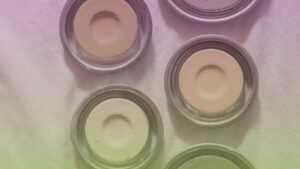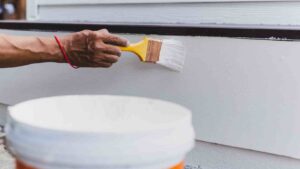
Flexible packaging is printed using both flexographic and gravure printing methods and comprises a number of different end-products. These include, but are not limited to packaging for:
1. Confectionary Products
2. Cookies/ Biscuits
3. Coffee
4. Juice
5. Food
Types of Flexible Packaging Inks
1. Surface Printing Inks
- High gloss
- Excellent rub resistance
- Resistance to a number of different external elements, such as water, solvents, detergents and other materials that may come into contact with the printed surface
These type of inks uses a protective overprint varnish in order to increase the surface resistance and impart the desired C.O.F. and gloss
2. Lamination Inks
Lamination is the process of combining two or more substrates to form a tough packaging structure to hold and provide barrier protection for the contents.
Lamination can be accomplished with adhesives (adhesive lamination) or with molten plastic (extrusion lamination) that acts to adhere to the packaging films together.
Lamination inks are typically sealed inside the lamination structure so that the ink surface is not exposed to the outside, however, the inks must still exhibit excellent adhesion to the film on which they are printed and they must not interfere with the bonding of the lamination
films.
Differences between Surface Printing Inks and Lamination Inks
Surface printing inks – are typically formulated with waxes that migrate to the surface of the ink film to provide rub, scuff and other resistance properties. They must also have good gloss, particularly if they are not to be overprinted.
Lamination inks – do not have the gloss requirements of surface inks but they do require excellent bonding ability to ensure that the lamination structure isn’t compromised after manufacturing. They typically do not incorporate a lot of waxes or surface-active ingredients as these can often interfere with lamination bonding.
Common types of Flexible Packaging Substrates
- Biaxially oriented polypropylene (BOPP)
- Cast polypropylene (CPP)
- Polyester (treated or coated)
- Nylon
- Cellophane
- Polyethylene (LLDPE/HDPE)
Various Resin Types Used
The various resin types used, each with its advantage over another, in solvent-based flexible packaging inks are listed in the table below. Each type can be combined to increase overall performance.

Pigments and Their Functions
Pigments are considered to be the chief constituent of ink and contribute about 50 per cent of its cost. A pigment is essentially any particulate solid – coloured, black, white or fluorescent – that alters the appearance of an object by the selective absorption and/or scattering of light.
Pigments colour the ink and provide gloss, abrasiveness and resistance to light, heat, solvents, etc.
The various pigments used in solvent-based flexible packaging inks are listed in the table below.

Additives and Their Functions in Printing Inks
Additives play a critical role in the formulation and production of inks, helping to impart the necessary characteristics the ink needs, whether it is to run more smoothly on the press or to protect the finished product. These additives come in many forms, whether it is waxes, surfactants, defoamers or countless other products. It may not take a lot of a particular additive to improve ink, but the right ingredient can make a major difference. These include:
- Plasticisers – enhance the flexibility of the printed film;
- Wax – promotes rub resistance;
- Drier – catalyzes the oxidation reaction of inks that dry by oxidation;
- Chelating agent – increases the viscosity of the ink (aluminium chelate) and promotes adhesion (titanium chelate);
- Antioxidant – delays the onset of oxidation polymerization by reacting with free radicals formed during the autooxidation thus preventing them from reacting further;
- Surfactants – which improve wetting of either the pigment or substrate, act as stabilizing agents for pigment dispersion;
- Alkali – controls the viscosity/solubility of acrylic resins in water-based inks;
- Defoamer – which reduces the surface tension in water-based inks so that stable bubbles cannot exist;
- Humectants – retard premature drying; and
- pH modifiers (usually amine derivatives) and biocides and bacteriostats
Written by Rusty from Maha Chem Philippines



